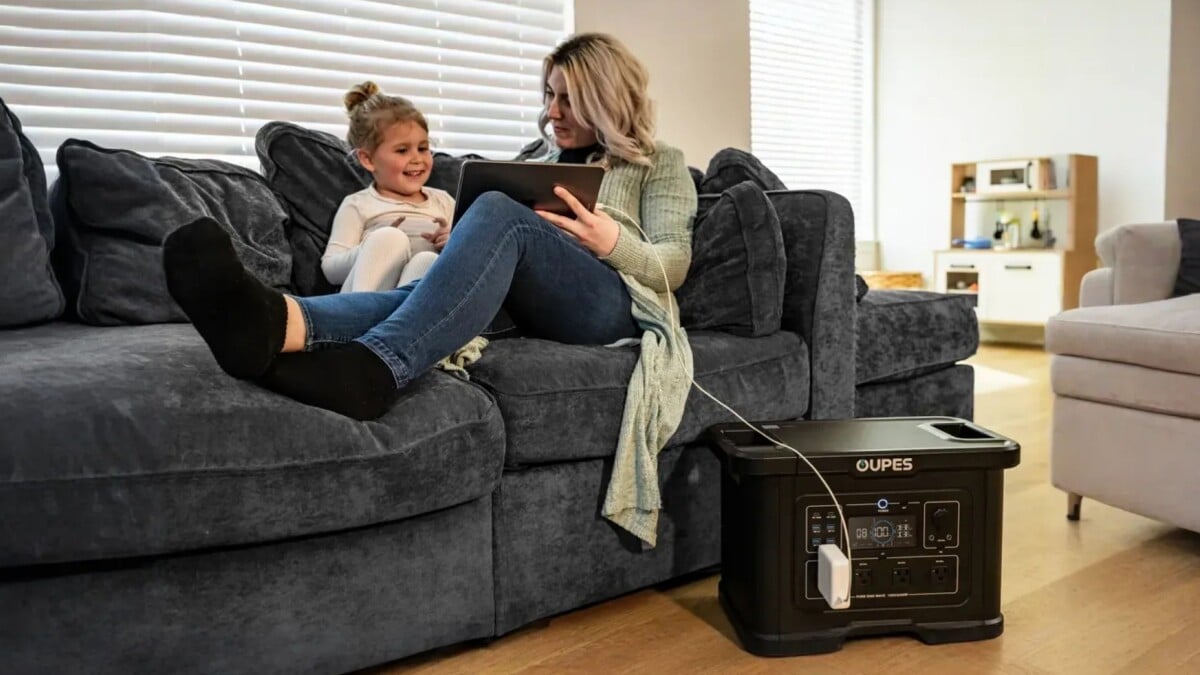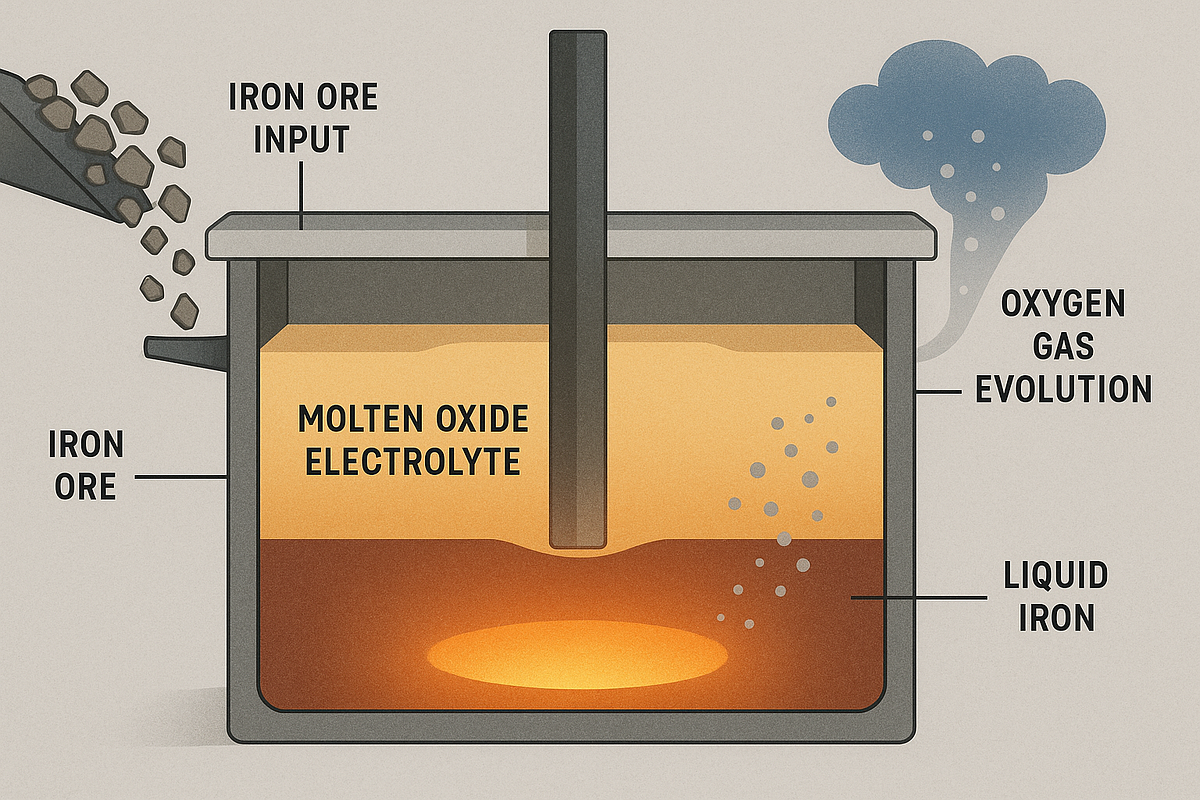SAVE $470: The Oupses Exodus 2400 portable power station is on sale at Amazon for $629, down from the list price of $1,099. That’s a 43% discount.
A portable power station can save the day on many…

SAVE $470: The Oupses Exodus 2400 portable power station is on sale at Amazon for $629, down from the list price of $1,099. That’s a 43% discount.
A portable power station can save the day on many…

CNN is planting its own flag in the ever-growing creators economy.
The network’s international division revealed a new initiative on Thursday to create a unit, titled CNN Creators, based out of its newly launched Middle East hub in…


Morocco has encouraged investment by aerospace suppliers in recent years, hoping to match its success in car manufacturing by creating hubs to shorten supply chains and share expertise.
Sign up here.
Safran will invest 200 million euros ($231 million) to build the assembly line, which will supply 25% of the company’s Airbus-related output or 350 LEAP-1A engines annually, Chair Ross McInnes said.
“This will be Safran’s only assembly line outside France and will be ready in 2028,” McInnes said, following a signing ceremony chaired by King Mohammed VI.
The CEO of partially state-owned Safran, Olivier Andries, said in a telephone interview that Morocco had been chosen in part for its “economic stability,” comments likely to resonate in France which is facing a budget crisis.
Morocco, where Safran already has several facilities, has a workforce with ample skills and the expansion is part of efforts to increase the resilience of Safran’s supplies, he added.
Until now, Safran’s Villaroche plant outside Paris has supplied virtually all Airbus LEAP-1A engines, with the capacity of as many as 1,000 engines per year spread between three lines.
The maintenance and repair plant will be operational in 2027 for a total investment of 120 million euros and an annual capacity of 150 engines, McInnes said.
“Safran’s new investments place Morocco among the few countries capable of producing complete aircraft engines,” said Industry Minister Ryad Mezzour, hoping the new facilities would attract additional suppliers.
Morocco has one of Africa’s most diversified economies and is the second industrial nation on the continent.
With 150 firms, Morocco’s aerospace sector employs 25,000 people. Its exports rose to 26 billion dirhams ($2.8 billion) in 2024 from 21.8 billion dirhams a year earlier.
“Safran’s plants will help Morocco double its aerospace industry exports,” the industry minister said.
To attract investors, Morocco offers incentives covering up to 30% of capital expenditures, along with access to real estate in specialised industrial zones such as Midparc, where Safran will establish its facilities near Casablanca’s airports.
“84% of operators in the aerospace sector are foreign investors,” employment minister Younes Sekkouri told Reuters.
Morocco has seven vocational training institutes for aerospace and plans to train 10,000 new talents, including in high-tech industry segments, by 2030, he said.
($1 = 0.8647 euros)
($1 = 0.8642 euros)
(This story has been corrected to say 200 million euros in paragraph 3 and 120 million euros in paragraphs 9)
Reporting by Ahmed El Jechtimi, additional reporting by Tim Hepher; Editing by Lisa Shumaker and Richard Chang
Our Standards: The Thomson Reuters Trust Principles.

Zoe Saldaña said in an interview with Beyond Noise that James Cameron is “considering a documentary about the making” of the “Avatar” movies, which the Oscar-winning actor is keen on because it will “finally give us a chance to…

After more than a decade of speculation,…

In my recent reassessment of global steel demand trajectories, particularly in light of declining cement consumption driven by a slowing Chinese…

Stranger Things co-creator Ross Duffer is finally setting the record straight about the season five runtimes.
After rumors swirled that every episode in the fifth and final season of the hit Netflix series would run over 90 minutes long…

Remediation has emerged as a pivotal component of modern nursing education, serving as an essential bridge between academic instruction and clinical practice. Far beyond a reactive intervention for struggling students, remediation is a proactive, structured, and student-centered approach that fosters a growth mindset, supports clinical judgment development, and cultivates resilience. When thoughtfully integrated into the nursing curriculum, remediation contributes meaningfully to both short-term academic achievement and long-term professional competence. It prepares nursing students to meet the demands of an increasingly complex and dynamic healthcare environment.
At its core, remediation involves a continuous cycle of self-assessment, targeted learning, clinical application, and reflective practice. This iterative process reinforces deep learning while encouraging students to take ownership of their educational journey. The initial stage centers on self-assessment, which enables students to identify areas of weakness or knowledge gaps. Using formative assessment tools, such as quizzes, reflective writing, and concept mapping, students are guided to recognize their learning needs. These insights are then organized thematically, allowing for strategic prioritization and individualized learning goals.
To address these identified gaps, students are encouraged to engage with a variety of reputable resources, including course resources, peer-reviewed journal articles, and clinical decision-making tools like Lippincott® Advisor. This multifaceted approach to content acquisition supports diverse learning preferences and promotes evidence-based practice. Importantly, students are also taught to employ metacognitive strategies such as self-regulation, elaboration, and critical reflection. By documenting their learning processes and monitoring their progress, students enhance their ability to think critically and develop habits associated with lifelong learning.
The strength of remediation lies in its cyclical nature. After acquiring new knowledge, students are expected to apply their learning in realistic, practice-based settings. Clinical simulations, patient case studies, and scenario-based discussions serve as effective mechanisms for translating theoretical knowledge into practical skills. These experiences allow students to refine their clinical judgment, identify residual gaps in understanding, and solidify their competency. Following each application experience, students engage in reflective exercises that prompt them to evaluate their performance, integrate feedback, and adapt their strategies accordingly. This continuous loop of learning and reflection promotes mastery and supports long-term retention.
A targeted, data-driven approach to reviewing content is a distinguishing feature of effective remediation. Rather than revisiting all instructional material indiscriminately, students are guided to focus on specific content areas where deficits remain. The use of academic performance analytics and diagnostic tools enhances this process by providing actionable insights into students’ strengths and weaknesses. Faculty play a critical role in interpreting this data and coaching students through personalized learning plans. Additionally, the inclusion of diverse content modalities such as infographics, podcasts, interactive modules, and visual case studies serves to increase engagement and accommodate varied learning styles.
Equally vital to the success of remediation is the integration of applied learning opportunities. Encouraging students to use newly acquired knowledge in complex clinical scenarios facilitates higher-order thinking and supports the development of clinical decision-making skills. Strategies such as case-based learning, team-based simulations, and unfolding patient scenarios have consistently demonstrated improved learning outcomes and deeper engagement. Without this application phase, remediation risks becoming a passive exercise, potentially leaving critical knowledge gaps unresolved.
Assessment following remediation serves a dual purpose: it provides an opportunity for students to retrieve and apply knowledge in a meaningful context, and it offers faculty a chance to evaluate the effectiveness of the remediation process. Programs that incentivize thorough remediation — for example, by awarding academic credit or offering second-chance assessments — motivate students to invest in their learning. Research indicates that assigning targeted remediation activities to students who score below a certain threshold, followed by opportunities for reassessment, leads to improved academic performance and increased confidence.
An emerging and transformative element in contemporary remediation practices is the integration of artificial intelligence (AI). AI-powered tools, such as Lippincott® Ready for NCLEX®, offer personalized learning pathways that adapt dynamically to each student’s performance metrics. These platforms provide rich, multimodal content ranging from adaptive quizzes to interactive case scenarios that support knowledge reinforcement, critical thinking, and skill application. Students identified as at-risk are offered expanded remediation content, including scenario-based exercises and targeted feedback loops. By utilizing AI and a research-backed remediation process that includes assessing, reviewing, applying, and reflecting, educators can make remediation both individualized and scalable, ultimately increasing its effectiveness and accessibility.
Remediation in nursing education should be conceptualized not as a punitive or remedial measure, but as a forward-looking, empowering strategy that supports the holistic development of nursing students. By fostering self-directed learning, encouraging targeted review, facilitating clinical application, and promoting reflective practice, remediation prepares students to become safe, effective, and adaptable healthcare professionals. As nursing education continues to evolve in response to technological advancements and changing patient needs, the integration of data-informed strategies and AI-enhanced platforms will further elevate the role of remediation. Ultimately, well-executed remediation fosters a culture of excellence and accountability, ensuring that every student is equipped to contribute meaningfully to patient care and the healthcare system at large.